ID 1360831
Lot 115 | Principia
Estimate value
$ 10 000 – 20 000
The third and final edition published during the author's lifetime, the basis for all subsequent editions; one of 200 large paper copies. "Pemberton was invited to superintend the editing of the third edition of the Principia ... Pemberton was then about thirty years old and was rightly flattered to get the opportunity to work so closely with the great eighty-year-old Newton. However, Newton often ignored Pemberton's editorial suggestions. Pemberton wrote 'A View of Sir Isaac Newton's Philosophy,' which he had partly read to the dying Newton. It made no great mark but could at least be recommended as being propaedeutic" (DNB). Including Newton's Prefaces to previous editions and his new one mentioning Halley's comet, and many alterations "the most important being the scholium on fluxions, in which Leibnitz had been mentioned by name. This had been considered an acknowledgement of Leibnitz's independent discovery of the calculus. In omitting Leibnitz's name in this edition, Newton was criticized as taking advantage of an opponent whose death had prevented any reply" (Babson).
The 1726 edition was comprised of 1250 copies, evidenced by William Bowyer's paper stock ledger which records the following: Superfine 50 [largest paper]; Royal 200 [large paper]; Demy 1000 [regular issue]. Royal copies can be identified by their size and CC watermark. See: Henry P. Macomber and Gerald G. Grubb, "A census of the owners of copies of the 1687 first edition of Newton's Principia", PBSA 47 (1953), 269-304, p.293). Babson 11-12, Wallis 9.
Quarto (283 x 220mm). Half-title, engraved frontispiece of Newton by George Vertue after I. Vanderbank, title-page printed in red and black; 2 pp. bookseller catalogue at rear (a couple minor stains; Royal Privilege leaf bound before half-title). Contemporary calf, red spine label (rebacked, some scuffing, corners showing). Provenance: Green family of Wilby (armorial bookplate with chevron between three bucks trippant with motto "virides fecere merendo") – E.C.G. Sanford (gift inscription from L.G. Sanford) – Owen Gingerich (bookplate).
| Artist: | Isaac Newton (1643 - 1727) |
|---|---|
| Place of origin: | England |
| Artist: | Isaac Newton (1643 - 1727) |
|---|---|
| Place of origin: | England |
| Address of auction |
CHRISTIE'S 20 Rockefeller Plaza 10020 New York USA | ||||||||||||||
|---|---|---|---|---|---|---|---|---|---|---|---|---|---|---|---|
| Preview |
| ||||||||||||||
| Phone | +1 212 636 2000 | ||||||||||||||
| Fax | +1 212 636 4930 | ||||||||||||||
| Conditions of purchase | Conditions of purchase | ||||||||||||||
| Shipping |
Postal service Courier service pickup by yourself | ||||||||||||||
| Payment methods |
Wire Transfer | ||||||||||||||
| Business hours | Business hours
|
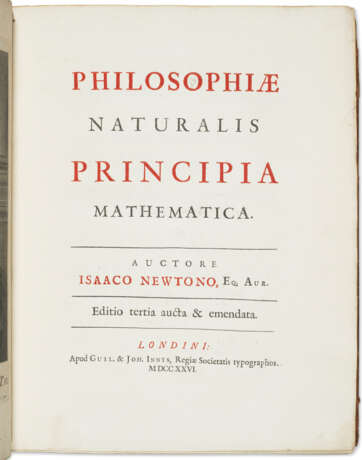
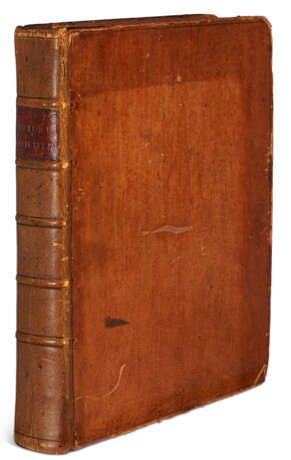
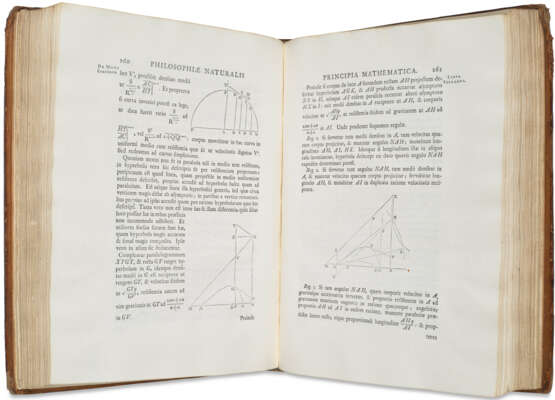

![[NEWTON, Isaac (1642-1727)]](/assets/image/picture_4036009/5c8e6/3e601c7a9444e346ef4136ceaf96156f1720562400jpg__fix_162_205.jpeg)
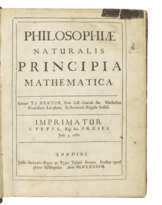
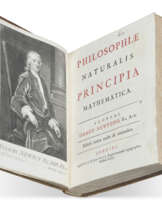




![[NEWTON, Isaac, Sir (1642-1727)]](/assets/image/picture_5109616/99751/5d28e844288dbc71121959c3b0b354f51765321200jpg__fix_162_205.jpeg)

